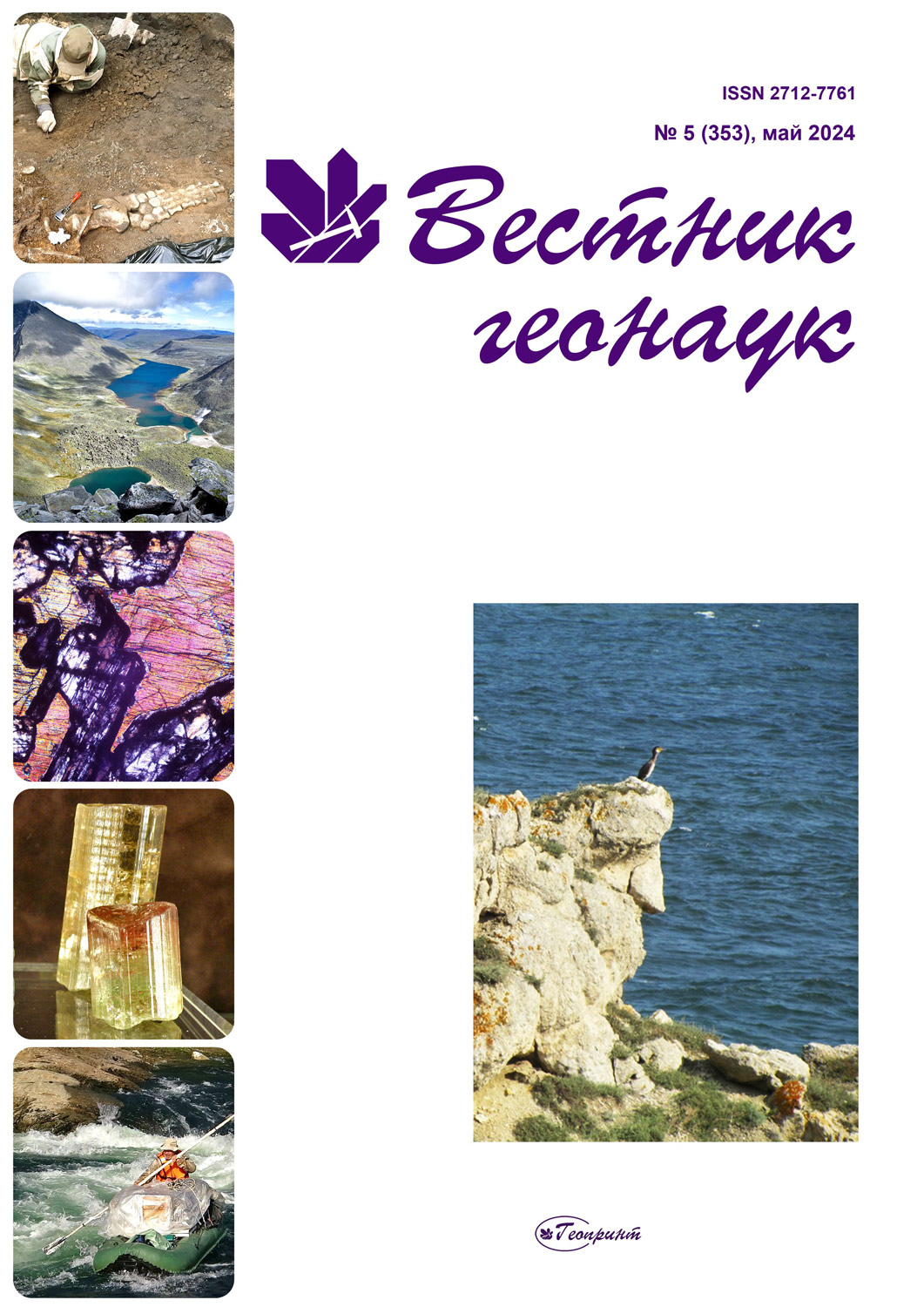pdf № 353, May
136 downloads

|
On the cover: accumulation of bryozoan bioherms, covered with a bacterial carbonate crust (Kerch Peninsula, Cape Kazantip, Kunushkai Bay, Upper Miocene deposits). Photo by A. I. Antoshkina |
|
|
1 |
|
|
2 |
|
|
Scientific articles |
|
Lithological-facies structure and history of the development of Б5 formation of the Danilovsky license area (Vendian-Cambrian, Eastern Siberia)
|
3—15 |
Assessment of geodynamic stability of the Earth's geospheres A. V. Kokin, A. A.KokinDOI: 10.19110/geov.2024.5.2 The Earth, as a system, is characterized by certain average state parameters (density, temperature). These parameters cannot but depend on similar states of internal geospheres (subsystems), which follow the unified law of increasing entropy of the cooling Earth from the center in the direction of the Earth's radius. As a model for assessing the dynamic stability of the Earth's internal geospheres relative to each other, the principle of the golden proportion (golden section) was used with the given parameters of density, temperature, power of the geospheres to the extreme ratios of their states at points (0.618; 1.618; 2.618), which determine the conditions for the stable dynamic equilibrium of the compared parameters of geospheres. And if these relations satisfied the known theoretical, model, geophysical data, then the conclusion was made that the geospheres in the compared parameter relations were in a state close to a stable dynamic equilibrium of the exchange of matter and energy between them. Otherwise, it was recognized that the compared geospheres of the Earth were in a state of either unstable dynamic equilibrium with an assessment of the level of this deviation from the golden numbers, or the known values of the density and temperature of the geospheres, as well as their structure, should be subject to clarification. Average model estimates of the parameters of the Earth's internal geospheres reach a stable dynamic equilibrium at a level of deviation from the golden numbers of up to 2.72 %. This allows estimating the model duration of the modern geological activity of the Earth for another 124 million years until the formation of a new state of the existing continents. The instability of the dynamic equilibrium of density and temperature of matter is established at the boundaries: continental and oceanic crust; oceanic crust and Golitsin layer; at the boundary between the outer part of the Earth's core and the lower mantle; inside the Earth's core at the level of identified transition zones in the four-layer core model. The presence of spheres with a high core density from 16.05 to 26.45 g/cm3 suggests the stratification of its central part into essentially gold and platinoid. The presence of instability boundaries in the dynamic state of geospheres is in good agreement with the concept of plate tectonics and with the depths of plume origin. It can be assumed that the relative equilibrium of the internal structure of the Earth will continue for about 124 million years until the beginning of the formation of a new Pangea Proxima, which, according to Cristofor Scotese, will arise in 200 million years. Keywords: Earth, density, temperature, geosphere, continental and oceanic crust, upper mantle, lower mantle, core, four-layer core model |
16—28 |
Cretaceous-palaeogene fossil resins of the arctic part of Denmark (Greenland Island)
|
29—35 |
Quartz-kyanite-muscovite magmatic mica in Borisovian dikes in the Southern Urals
|
36—39 |
|
Chronicle, events, facts. History of Science |
|
|
Decision of the 18th Geological Congress of the Komi Republic |
40—44 |
|
The 16th Russian seminar "Technological mineralogy: comprehensive assessment of non-conventional types of mineral raw materials and their rational use" |
45 |
|
Silence of eternity. The Russian painting plein air at the Subpolar Urals |
46—48 |
- 8(8212)24-53-53
- institute@geo.komisc.ru
- Mon.-Fri. 8.00-17.00












